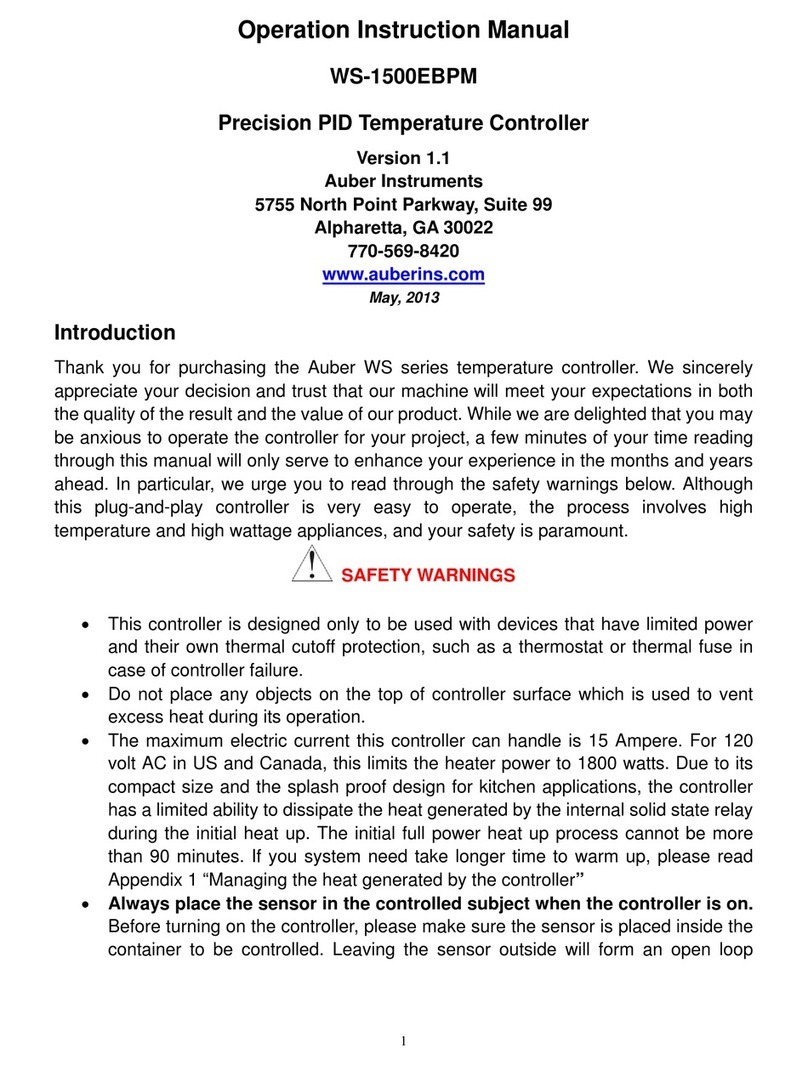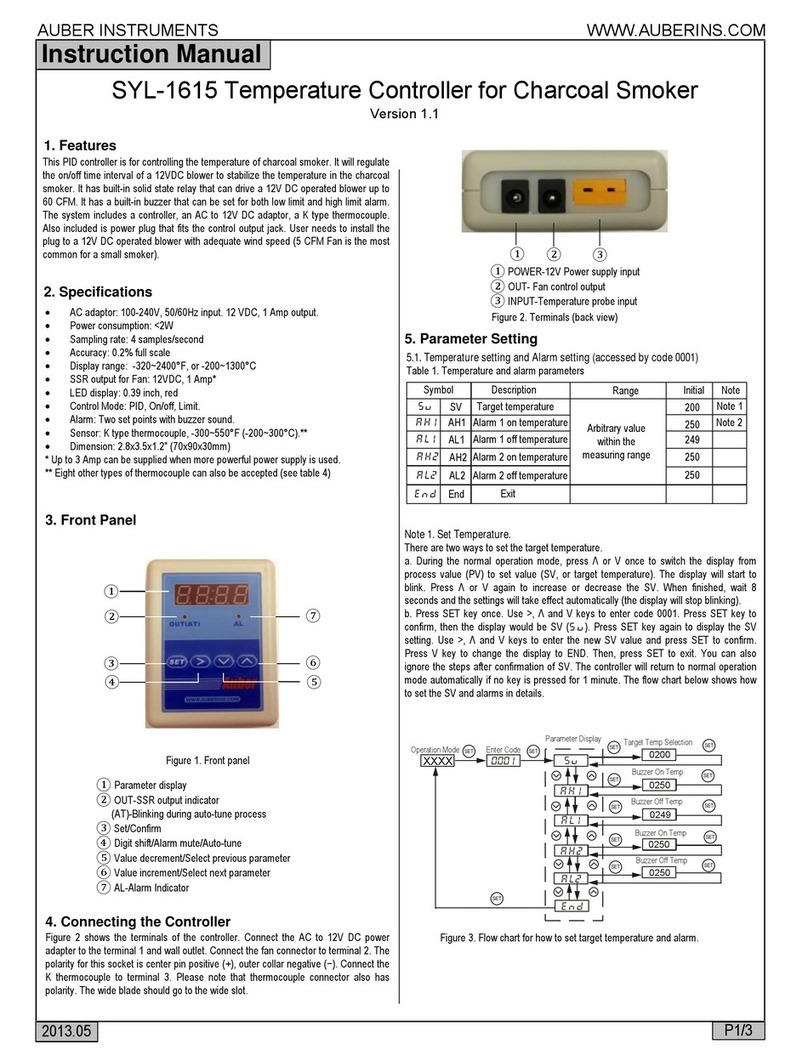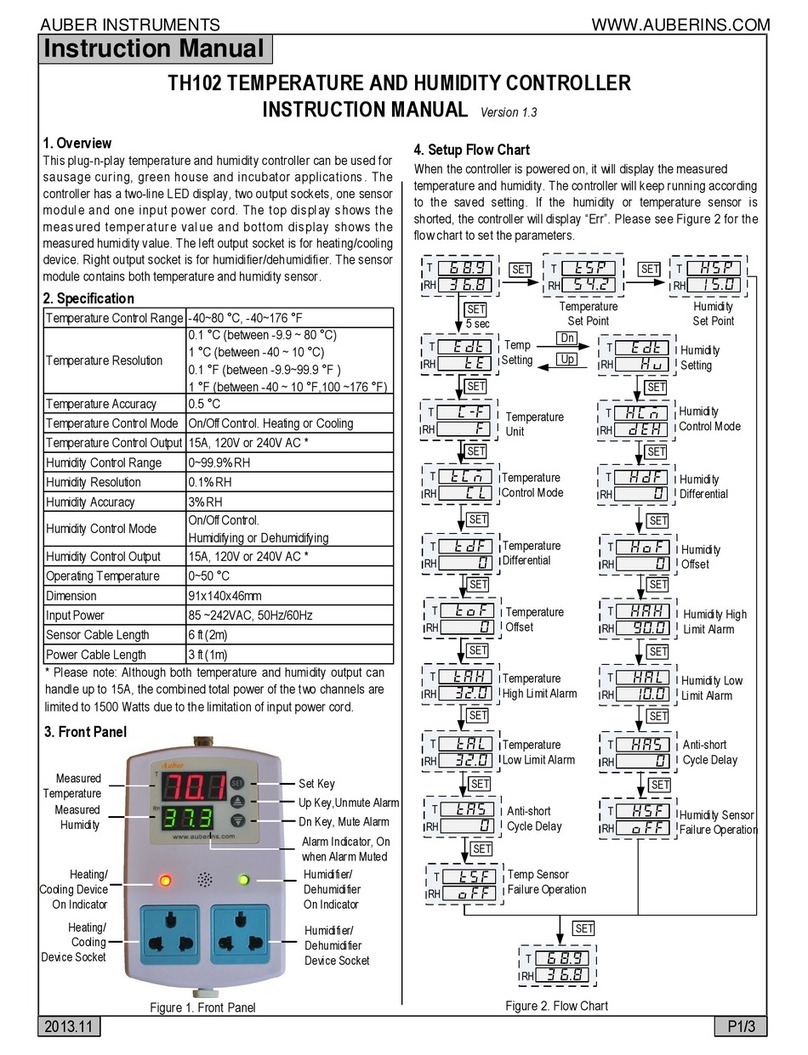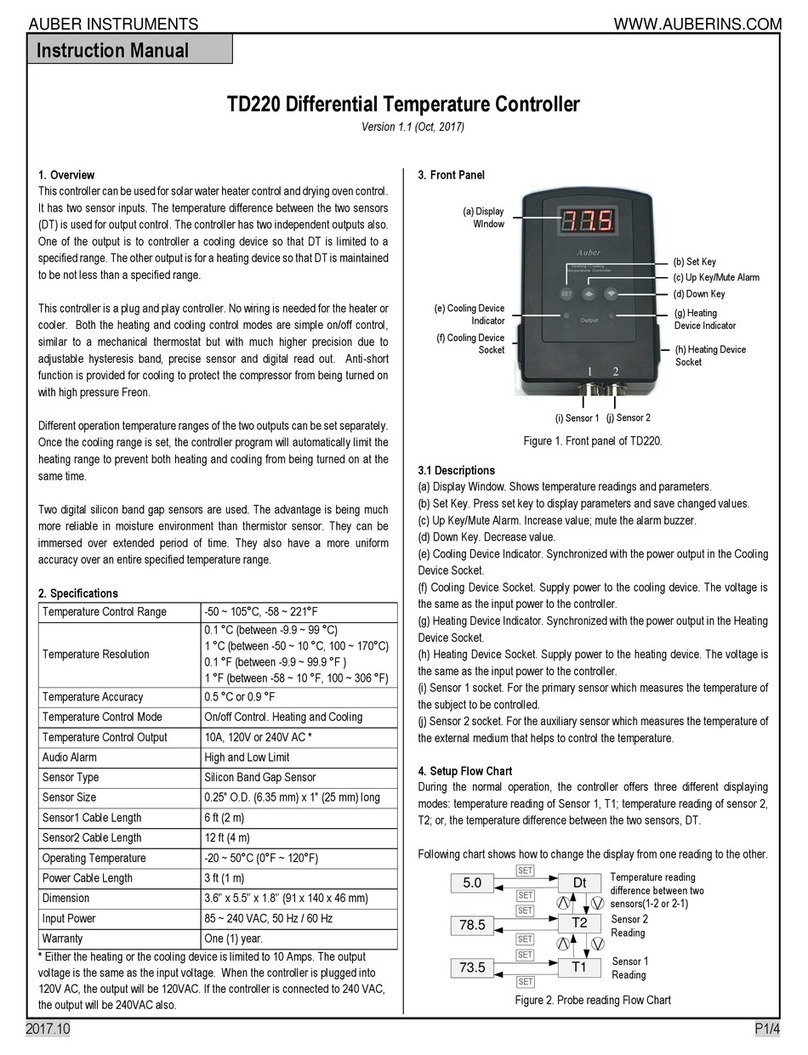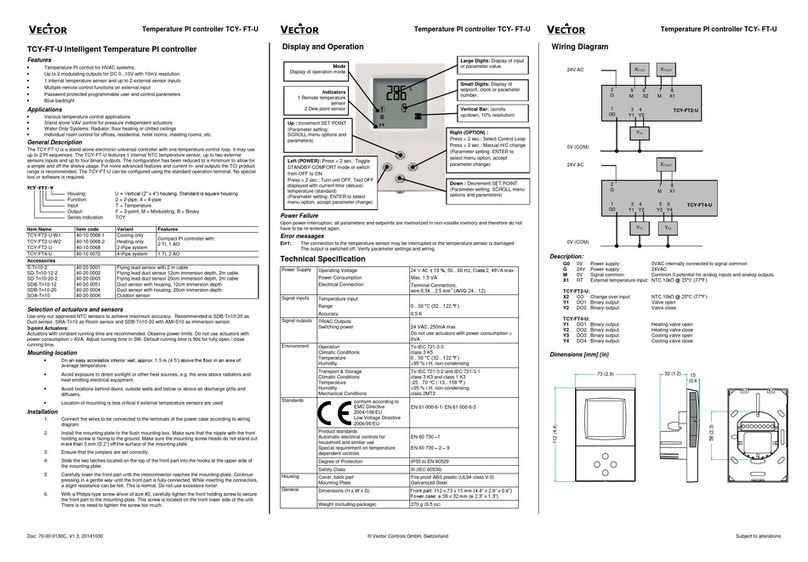
4) Controller System Configuration Parameter.
This section discusses how to configure the controller for a specific application. For most
of sous vide cooking users, there is no need to read this section. The controller’s default
setting is for most commonly configuration of sous vide cooking.
The controller parameters are divided into two groups.
A) The first group of parameter is related to the control performance. They need to be
adjusted based on the system to be controlled. Table show the list of these parameters,
their range and initial set value when left the factory.
Table 2. List of control parameters and its initial settings under code 166.
Symbol Display Description Range Initial
P
P
Proportional band (in 0.1 Degree) 0-600 180
I
I
Integral constant (second) 0-900 700
d
d
Derivative constant (second) 0-300 40
AT
AC
Auto-tune 0=off 1=on 0
T
C
Cycle rate (second) 1-100 2
Details about each parameter
•P. Proportional band. It is in 0.1 degree units. This parameter control the output
of the controller based on the difference between the measured and set
temperature. Larger the P number means the weaker the action (lower gain). e. g.
If P=100, the proportional band is 10 degree (100 x 0.1=10). When the sensor
temperature is 10 degrees below the proportional band (10 degrees below the
setting), the controller will have 100% output. When the temperature is 5 degree
below the set point, the output is 50%. When the temperature is equal to the
setting, the controller will have 0% output (assuming integral and derivative
functions are turned off). This constant also affects both integral and derivative
action. Smaller P values will make the both integral and derivative action stronger.
Please note the value of the P is temperature unit sensitive. If an optimized P
value was found when operating the controller in Celsius, it needs to be multiplied
by1.8 when changed to Fahrenheit.
On/off mode. If P is set to 0, the control mode will be changed from PID mode to
On/off mode. On/off mode should be used for controlling an external relay, a
solenoid valve, or a compressor of freezer. You also need to set the hysteresis
band (dead band) for the on/off mode. In the on/off mode, Integral and Derivative
parameters are not valid.
•I. Integral time. The unit is in seconds. This parameter controls the output of
controller based on the difference between the measured and set temperature
8
